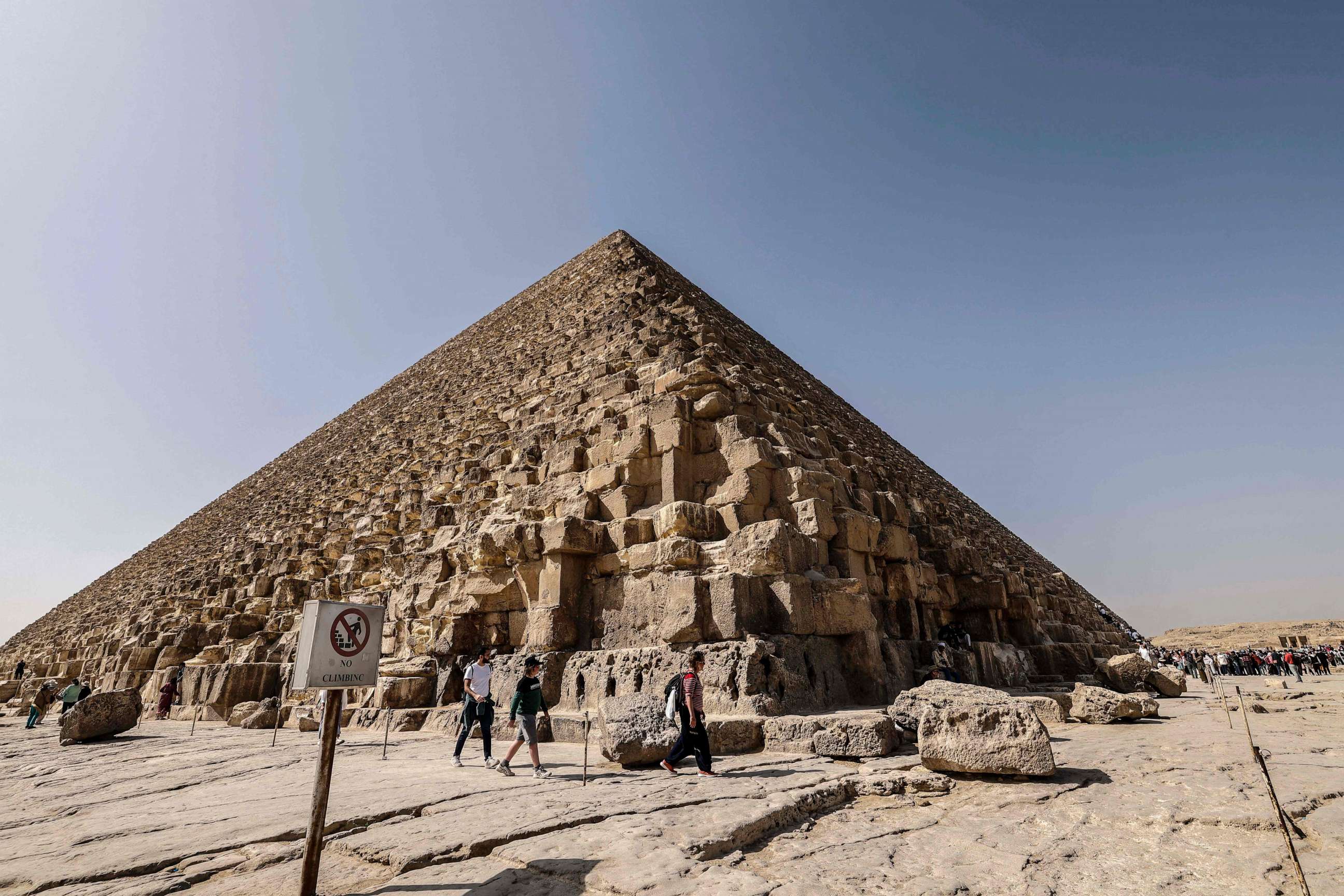Egypt unveils hidden tunnel inside Great Pyramid of Giza
"Scanning work will continue to uncover more secrets.”
CAIRO, Egypt -- A nine-meter long hidden passageway was discovered inside the Great Pyramid of Giza, Egypt’s tourism minister Ahmed Issa announced on Thursday.
The function of the corridor near the main entrance of the Pyramid of Khufu, located right behind the chevron zone on the north side, was not immediately known but officials said it could lead to further discoveries.
The finding was made by researchers from the Scan Pyramid project, an international mission that since 2015 has been using modern methods -- including radiographic muons, infrared thermography and 3D reconstruction techniques to probe the internal structure of the pyramid.

The gabled ceiling of the secret tunnel suggests it was built to lighten the load on the structure, Mostafa Waziri, head of Egypt’s Supreme Council of Antiquities told reporters at the pyramid site.
“But a big question mark hangs over whether this corridor was created to relieve the weight on the [main] entrance or lighten the load on a space yet to be discovered,” he added. "Scanning work will continue to uncover more secrets of this structure.”
The Great Pyramid, the largest of the Great Pyramids of Giza, is the last surviving wonder of the ancient world. It was built as a royal tomb some 4,500 years ago during the reign of Pharaoh Khufu.

A chevron technique was used in building the pyramid to cover internal structures and prevent them from collapsing. Scientists say the detection of any previously unknown internal structures could lead to a better understanding of the construction process of the ancient monument.
In 2017, the same team of scientists discovered a large void through cosmic-ray muon radiography, which they said was the first major inner structure found in the Great Pyramid since the 19th century. They found another unknown cavity on the north eastern edge of the Pyramid the year before.
Egypt aims to tap into new ancient discoveries to draw in tourists, a major source of foreign currency and jobs that has been hard hit by the COVID-19 pandemic as well as political instability following the 2011 revolution.




